craftsman snowblower maintenance manual
- by laurianne

Regular maintenance ensures optimal performance‚ longevity‚ and safety. This guide provides comprehensive steps for Craftsman snowblower care‚ helping you maintain efficiency and reliability throughout the winter season.
1.1 Importance of Regular Maintenance
Regular maintenance is crucial for ensuring your Craftsman snowblower operates efficiently and safely. It prevents breakdowns‚ extends equipment lifespan‚ and ensures reliability during harsh winter conditions. Proper care also enhances performance‚ reduces the risk of costly repairs‚ and keeps you protected from potential hazards. By following a consistent maintenance routine‚ you can avoid common issues like starting problems or clogged systems. This guide will help you understand the essential steps to keep your snowblower in top shape throughout the winter season.
1.2 Overview of the Maintenance Manual
This manual provides a detailed guide for maintaining your Craftsman snowblower‚ ensuring optimal performance and longevity. It covers essential tasks such as oil changes‚ spark plug replacement‚ and lubrication. The manual also outlines proper inspection routines for belts‚ tires‚ and electrical systems. By following the recommended procedures‚ you can address common issues before they escalate. Additionally‚ it emphasizes the use of synthetic oil and 5W-30 for colder conditions‚ aligning with manufacturer recommendations for reliable operation and extended equipment life.

Pre-Maintenance Checks
Pre-maintenance checks ensure safety and readiness. Review the manual‚ inspect critical components‚ and gather proper tools to avoid unexpected issues during regular maintenance.
2.1 Safety Precautions Before Starting Maintenance
Always ensure the snowblower is turned off and disconnected from power sources. Wear protective gear‚ including gloves and safety glasses. Read the manual thoroughly to understand safety protocols. Never attempt maintenance near open flames or sparks. Ensure proper ventilation to avoid inhaling fumes. Keep children and pets away during maintenance. Double-check that all moving parts are stationary before starting work. Use the correct tools to prevent accidental injuries. Avoid shortcuts and follow all safety guidelines to ensure a safe maintenance process.
2.2 Gathering Necessary Tools and Supplies
Before starting maintenance‚ gather essential tools and supplies. These include wrenches‚ screwdrivers‚ pliers‚ oil filters‚ spark plugs‚ and lubricants. Ensure you have the correct type of oil for your engine‚ as specified in the manual. Additionally‚ collect rags‚ safety glasses‚ and gloves for protection. Check for any model-specific tools recommended by Craftsman. Having all supplies ready ensures a smooth and efficient maintenance process‚ preventing delays and potential mistakes during repairs or adjustments.
2.3 Understanding the Snowblower’s Components
Understanding your Craftsman snowblower’s components is crucial for effective maintenance. Key parts include the auger‚ impeller‚ engine‚ drive system‚ and control panel. The auger collects snow‚ while the impeller throws it. Familiarize yourself with the location of the oil reservoir‚ spark plug‚ and fuel system. Knowing these components helps identify potential issues and ensures proper care. Always consult the manual for specific diagrams and descriptions tailored to your model‚ as components may vary.
Essential Maintenance Tasks
Regular oil changes‚ spark plug replacements‚ and fuel system checks are vital. These tasks ensure smooth operation‚ prevent breakdowns‚ and extend the snowblower’s lifespan.
3.1 Oil Change and Lubrication
Regular oil changes are crucial for maintaining your Craftsman snowblower’s engine health. Use oil that meets the engine’s specifications‚ such as synthetic 5W-30‚ for optimal performance. Drain old oil carefully and refill with the recommended type. Lubricate moving parts like the auger and impeller to reduce friction and wear. Refer to the manual for specific instructions to ensure proper lubrication and oil change procedures. This helps extend the lifespan and ensures reliable operation during harsh winter conditions.
3.2 Spark Plug Replacement
Replacing the spark plug ensures reliable engine starting and optimal performance. Locate the spark plug‚ remove the wire‚ and use a spark plug socket to unscrew it; Inspect for wear or fouling and replace with a new plug of the recommended type. Gap the plug according to the manual’s specifications. Tighten securely to avoid leaks. A properly maintained spark plug improves combustion efficiency‚ reducing the risk of engine misfires and enhancing overall snowblower performance during cold weather operation.
3.3 Fuel System Maintenance
Proper fuel system maintenance is crucial for reliable engine performance. Always use fresh‚ high-quality gasoline and avoid old or contaminated fuel. Drain the tank if storing the snowblower for extended periods to prevent stale fuel buildup. Add a fuel stabilizer to maintain fuel quality. Check the fuel line for cracks or blockages and replace if necessary. Ensure the fuel cap is tight to prevent moisture entry. Consult the manual for specific fuel recommendations to keep your snowblower running smoothly and efficiently.
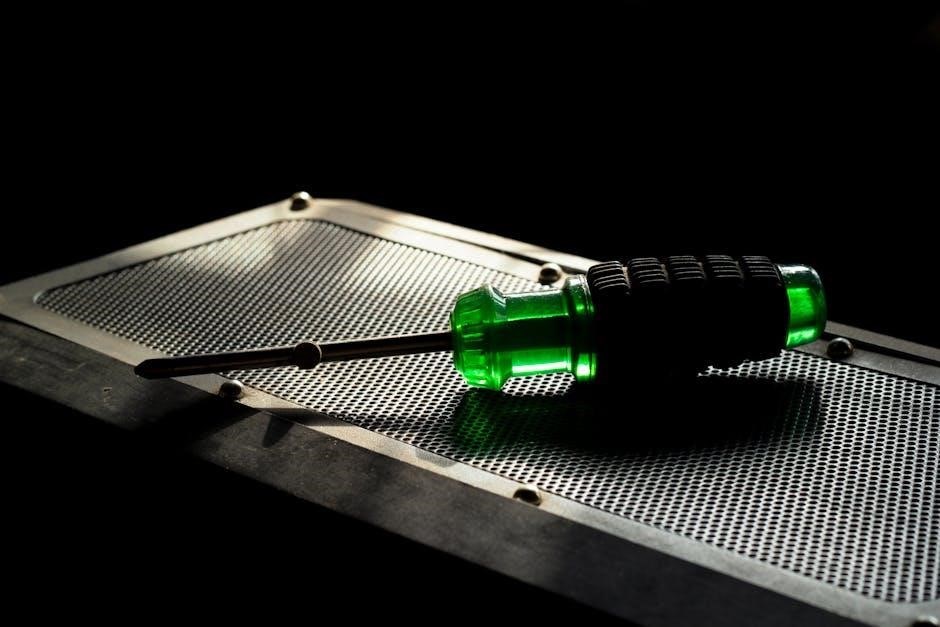
Auger and Impeller Maintenance
Regularly inspect and clean the auger and impeller to ensure proper snow flow. Lubricate moving parts and check for damage or wear. Replace worn components promptly.
4.1 Cleaning the Auger and Impeller
Cleaning the auger and impeller is crucial for optimal performance. Disconnect the spark plug and remove debris using a wire brush or scraper. Inspect for damage or wear. Lubricate moving parts after cleaning to ensure smooth operation. Regular maintenance prevents clogging and ensures efficient snow removal. Always follow safety precautions when handling sharp components.
4.2 Lubricating Moving Parts
Proper lubrication is vital for smooth operation. Use a high-quality synthetic lubricant on all moving parts‚ including bearings‚ hinges‚ and gears. This reduces friction and prevents corrosion. Regular lubrication ensures your snowblower runs efficiently and extends its lifespan. Synthetic options are recommended for better performance in cold conditions. Always consult the manual for specific guidance on lubrication points and types to keep your Craftsman snowblower in top condition.
4.3 Checking for Damage or Wear
Inspect the auger‚ impeller‚ and other components for signs of damage or excessive wear. Look for cracks‚ dents‚ or worn-down edges that could affect performance. Replace any damaged parts immediately to prevent further issues. Check belts for fraying or cracks and ensure all hardware is secure. Addressing wear early helps maintain efficiency and prevents breakdowns during use. Regular inspections are key to ensuring your snowblower operates safely and effectively throughout the winter season.

Drive System and Tire Maintenance
Check tire pressure‚ lubricate the drive system‚ and inspect the drive belt for wear. Ensure all components are in good condition to maintain smooth operation and traction.
5.1 Checking Tire Pressure
Proper tire pressure is essential for optimal traction and stable operation. Check the recommended pressure in your manual and inflate tires accordingly. Under-inflated tires can reduce efficiency and safety. Use a reliable pressure gauge and ensure tires are cold for accuracy. Adjust pressure as needed‚ especially in extreme temperatures. Properly inflated tires enhance performance and prevent uneven wear. Always recheck pressure before and after storage to maintain integrity and readiness for the next season.
5.2 Lubricating the Drive System
Lubricating the drive system ensures smooth operation and prevents wear. Apply a high-quality grease or lubricant to gears‚ axles‚ and moving parts. Refer to your manual for specific recommendations. Regular lubrication reduces friction and extends component life. Avoid using low-grade products that may degrade in cold temperatures. Proper lubrication enhances efficiency and ensures reliable performance during heavy snow conditions. Always clean surfaces before applying lubricant to maintain effectiveness and prevent contamination.
5.3 Inspecting the Drive Belt
Inspect the drive belt for cracks‚ frays‚ or excessive wear. Ensure proper alignment and tension‚ as misalignment or looseness can cause slippage or damage. Check for signs of glazing or uneven wear‚ which may indicate improper tension. Refer to your manual for specific inspection guidelines and replacement criteria. A damaged or worn belt can lead to reduced performance or complete failure. Regular inspections help prevent unexpected breakdowns and ensure consistent operation during snow-clearing tasks.
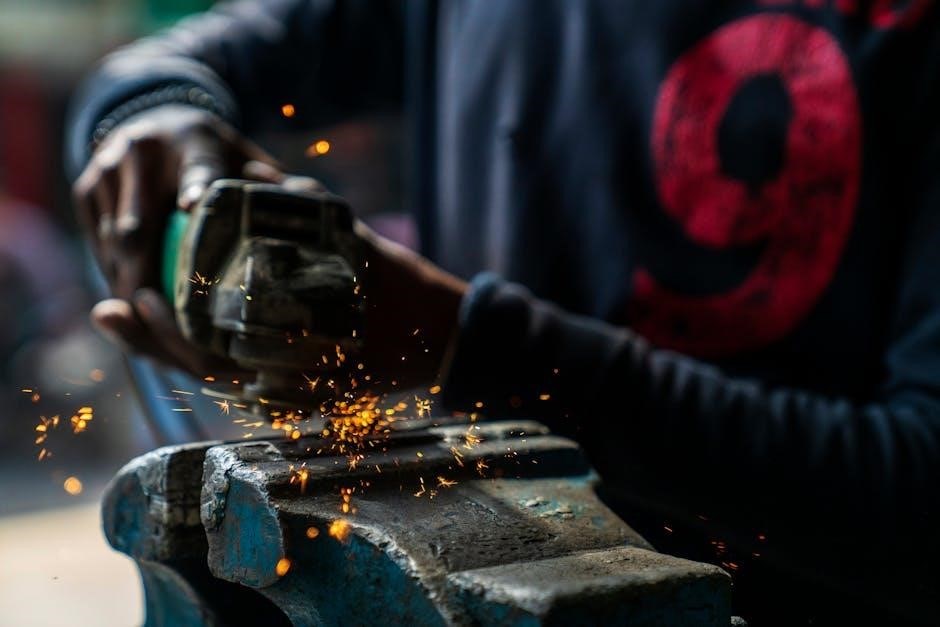
Electrical System Maintenance
Check the battery charge‚ inspect wiring for damage‚ and ensure all connections are secure. Troubleshoot issues with the electric start system for reliable performance during operation.
6.1 Checking the Battery
Inspect the battery terminals for corrosion and ensure they are tightly connected. Charge the battery if necessary‚ and test its voltage using a multimeter. Replace the battery if it shows signs of weakness or age‚ as a strong battery is crucial for the electric start system to function properly. Always follow safety guidelines when handling batteries to avoid accidents.
6.2 Inspecting the Wiring and Connections
Examine the wiring harness for signs of damage‚ such as frays‚ cuts‚ or corrosion. Ensure all connections are secure and not loose. Verify that the ground wire is properly attached to prevent electrical issues. Use a multimeter to test for continuity in critical circuits. If any damage or wear is found‚ repair or replace the affected components immediately to maintain safe and reliable operation of your Craftsman snowblower.
6.3 Troubleshooting Electric Start Issues
If your Craftsman snowblower’s electric start isn’t functioning‚ begin by checking the battery for charge and ensuring all terminals are clean and secure. Verify the solenoid is engaging properly and inspect the wiring for damage or corrosion. Consult the manual for specific troubleshooting steps. If issues persist‚ consider testing the starter motor or seeking professional assistance to resolve the problem effectively and safely.

Regular Inspections
Regular inspections ensure your snowblower operates safely and efficiently. Check for loose bolts‚ inspect belts for wear‚ and examine moving parts for damage to prevent unexpected issues.
7.1 Checking for Loose Bolts and Nuts
Regularly inspect all bolts and nuts to ensure they are tightened to the manufacturer’s specifications. Loose fasteners can lead to mechanical failures or unsafe operation. Use a wrench or screwdriver to check critical areas like the auger‚ impeller‚ and handlebars. Tighten any loose parts immediately to maintain stability and performance. Refer to your manual for torque specifications. This simple step helps prevent accidents and keeps your snowblower running smoothly throughout the winter season. Always double-check after repairs or adjustments for optimal safety.
7.2 Inspecting the Auger Belt
Inspect the auger belt for signs of wear‚ cracks‚ or fraying. Ensure it is properly aligned and not misaligned‚ as this can cause poor performance. Check for tension—loose belts may slip‚ while overly tight ones can strain the engine. Replace the belt if damaged or worn. Consult your manual for specific guidance on belt inspection and replacement. Proper belt maintenance ensures smooth operation and prevents unexpected breakdowns during snow removal. Regular checks help maintain efficiency and extend the life of your snowblower.
7.3 Looking for Signs of Wear on Moving Parts
Examine all moving components‚ such as the auger‚ impeller‚ and drive system‚ for signs of wear. Look for cracks‚ dents‚ or excessive play in joints. Check belts and cables for fraying or stretching. Ensure proper alignment of parts to prevent uneven wear. Lubricate pivot points as needed to maintain smooth operation. Replace any damaged or excessively worn parts immediately to avoid further damage. Regular inspections help prevent breakdowns and ensure your snowblower operates efficiently throughout the winter season.
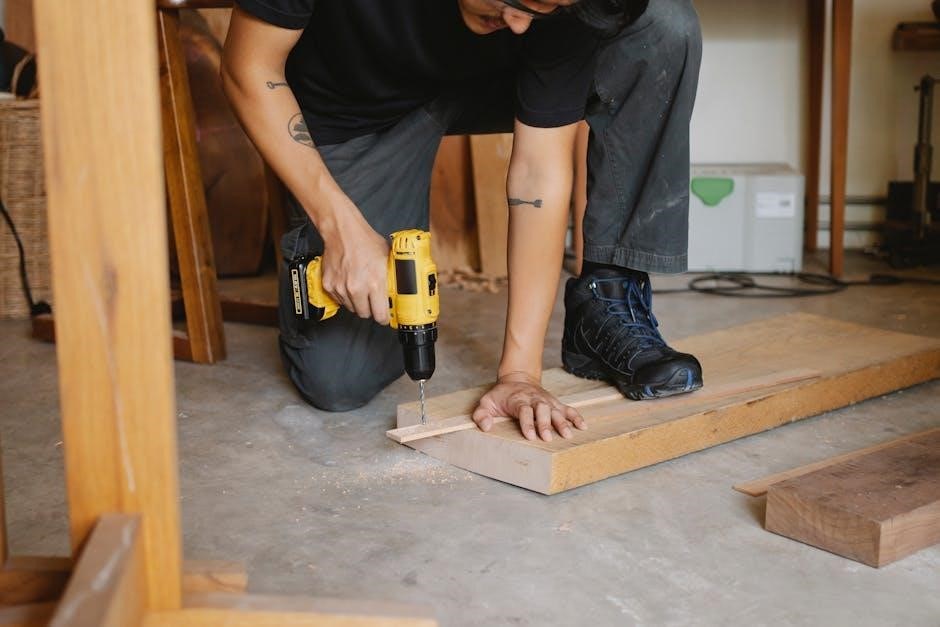
Storage and Preparation for Off-Season
Drain fuel‚ protect against rust‚ and store the snowblower in a dry‚ secure area. This ensures it remains in good condition for the next winter season.
8.1 Draining Fuel for Storage
Properly draining fuel is essential for off-season storage to prevent degradation and clogs. Locate the fuel drain valve or consult the manual for guidance. Allow the fuel to drain completely into an approved container. If draining isn’t possible‚ use a fuel stabilizer to prevent spoilage. This ensures the fuel system remains clean and functional for the next season. Always follow safety precautions when handling fuel.
After draining‚ store the snowblower in a dry‚ secure location to protect it from moisture and pests. This step is crucial for maintaining your snowblower’s performance and longevity.
8.2 Protecting the Snowblower from Rust
To prevent rust‚ thoroughly clean the snowblower‚ paying attention to metal surfaces. Use a wire brush to remove any corrosion or debris. Apply a rust-inhibiting spray or lubricant to exposed metal parts‚ especially the auger‚ impeller‚ and blade. Ensure all surfaces are dry before storage. Store the snowblower in a dry‚ climate-controlled area to avoid moisture exposure. Regularly inspect for rust and address it promptly to maintain your snowblower’s condition and functionality.
Follow the manufacturer’s recommendations for rust-preventive products to ensure compatibility and effectiveness.
8.3 Storing the Snowblower in a Dry Place
Store your Craftsman snowblower in a dry‚ well-ventilated area to prevent moisture damage. Avoid basements or garages prone to humidity. Clean the snowblower thoroughly before storage to remove dirt and debris. Cover it with a breathable material to protect from dust. Ensure the storage area is away from direct sunlight and extreme temperatures. Proper storage preserves the snowblower’s condition‚ ensuring it remains ready for the next winter season.

Troubleshooting Common Issues
Address issues like failure to start‚ poor snow throwing‚ or overheating by checking fuel‚ spark plugs‚ and auger obstructions. Consult the manual for detailed solutions.
9.1 Snowblower Won’t Start
Diagnose starting issues by checking the battery for corrosion and charge. Inspect the spark plug for wear and ensure it’s firing correctly. Check the fuel system for stale fuel or clogs‚ and verify the ignition coil is functioning. Ensure the primer bulb is working and the choke is operating smoothly. A dirty air filter or blockages in intake/exhaust can also prevent starting. Consult the manual for detailed troubleshooting steps to address these potential issues effectively.
9.2 Snowblower Not Throwing Snow Properly
If your snowblower isn’t throwing snow effectively‚ check for blockages in the chute or auger. Ensure the impeller is clean and free of debris. Verify that the auger belt is properly aligned and not slipping. Inspect the chute for damage or obstructions. Check the skid shoes for proper adjustment to avoid scraping the ground. Ensure the machine is lubricated and all moving parts are functioning smoothly. Consult your manual for specific adjustments or repairs to restore optimal performance.
9.3 Overheating Engine
An overheating engine can occur due to blockages in the cooling system‚ low oil levels‚ or excessive load. Check for debris in the air intake or muffler. Ensure the engine oil level is adequate and use the recommended viscosity. A dirty or clogged air filter can also contribute to overheating. Clean or replace the filter as needed. If issues persist‚ inspect the spark plug for fouling and ensure proper ignition. Consult your manual for specific cooling system maintenance and repair procedures to prevent damage.
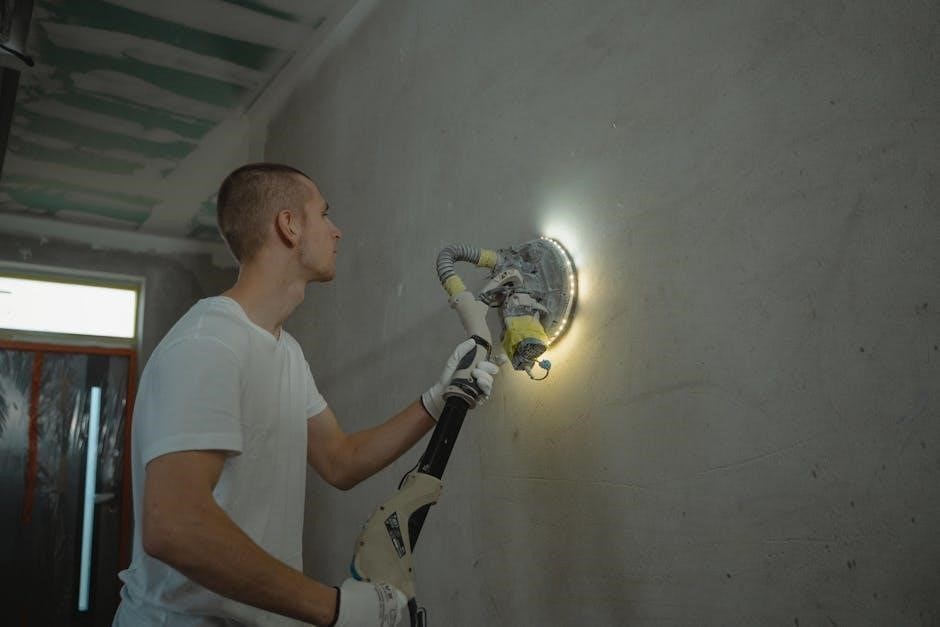
Safety Best Practices
Always read the manual thoroughly‚ wear protective gear like gloves and goggles‚ and avoid hazards. Keep children away and ensure proper footing to prevent accidents while operating.
10.1 Operating the Snowblower Safely
Always read the manual before use and wear protective gear like gloves and goggles. Ensure the area is clear of obstacles and people. Operate on stable‚ level ground and avoid throwing snow near bystanders. Never leave the machine unattended while running. Be cautious of icy surfaces and maintain a firm grip. Keep loose clothing tied back and long hair secured. If the snowblower jams‚ turn it off and follow manual instructions to clear safely. Prioritize visibility and avoid overreaching or operating in poor lighting conditions.
10.2 Wearing Protective Gear
Always wear protective gear when operating the snowblower to minimize injury risks. Use insulated‚ waterproof gloves to maintain grip and protect hands from cold. Wear safety goggles or glasses to shield eyes from debris. Choose sturdy‚ slip-resistant footwear for traction on icy surfaces. A warm hat and scarf can prevent heat loss. Consider ear protection if the machine is loud. Ensure loose clothing is secure to avoid entanglement. Proper attire enhances safety and comfort during operation.
10.3 Avoiding Common Hazards
Avoiding common hazards ensures safe operation. Always clear debris before starting‚ as objects like rocks or metal can cause damage or injury. Be cautious of icy surfaces to prevent slips. Never wear loose clothing that could get caught in moving parts. Keep children and pets away while operating. Avoid overreaching‚ which can lead to loss of control. Store the snowblower in a well-ventilated area to prevent carbon monoxide buildup. Follow the manual’s guidelines to minimize risks and ensure a safe working environment.
Proper maintenance ensures your Craftsman snowblower performs reliably. Follow the manual‚ prepare for winter‚ and inspect regularly to guarantee safety‚ efficiency‚ and longevity of your equipment;
11.1 Summary of Maintenance Tips
- Regular oil changes and spark plug replacements ensure engine longevity.
- Check tire pressure and lubricate moving parts for smooth operation.
- Clean the auger and impeller to maintain efficient snow clearing.
- Inspect belts‚ wires‚ and connections to prevent unexpected breakdowns.
- Drain fuel before storage and protect against rust for off-season care.
- Wear protective gear and follow safety guidelines during operation.
- Refer to the manual for specific instructions and troubleshooting.
These practices ensure your Craftsman snowblower remains reliable and safe throughout winter.
11.2 Importance of Following the Manual
Adhering to the Craftsman snowblower maintenance manual ensures safety‚ optimal performance‚ and prolongs equipment life. It provides specific instructions tailored to your model‚ reducing the risk of damage or voiding the warranty. Proper maintenance‚ as outlined‚ helps prevent breakdowns and ensures reliable operation during harsh winter conditions. Always refer to the manual for troubleshooting and maintenance schedules to keep your snowblower functioning at its best.
11.3 Final Checks Before Winter
Before the winter season begins‚ conduct a thorough inspection of your Craftsman snowblower. Ensure the fuel system is clean‚ oil levels are adequate‚ and the spark plug is in good condition. Check tire pressure‚ auger functionality‚ and lubricate all moving parts. Verify that all bolts and nuts are secure and inspect belts for wear. Perform a safety check to ensure all components operate smoothly. These final checks will help ensure your snowblower is ready to handle heavy snow conditions efficiently and safely.
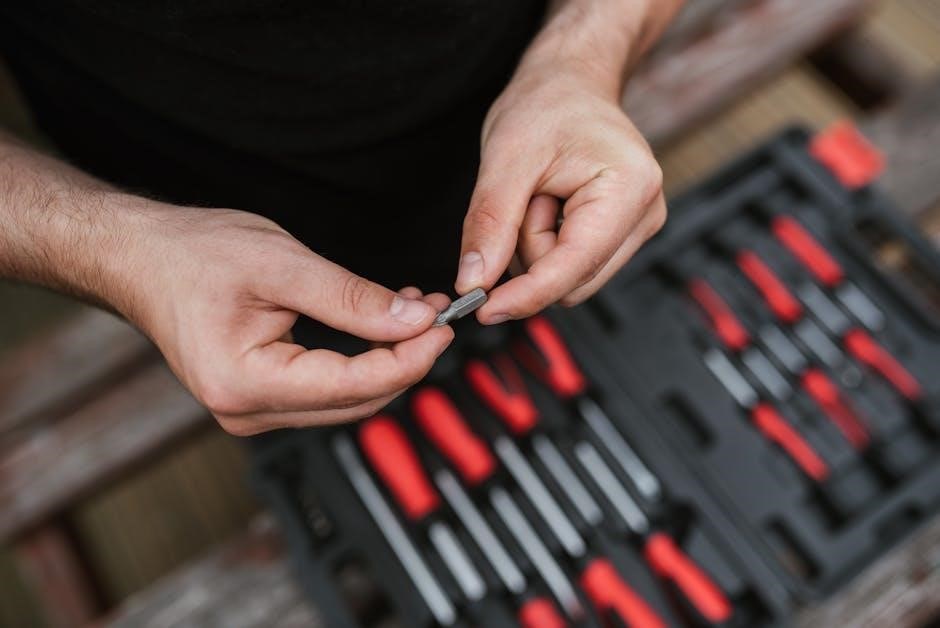
Additional Resources
For further assistance‚ refer to the owner’s manual or visit the manufacturer’s website for detailed guides. Online forums and communities offer valuable insights and troubleshooting tips from experienced users.
12.1 Where to Find Replacement Parts
To find genuine replacement parts for your Craftsman snowblower‚ visit Sears PartsDirect or authorized dealers. Online retailers like Amazon and eBay also offer a wide range. Local hardware stores and home improvement centers may carry compatible parts. Always verify compatibility with your model number. Refer to the owner’s manual for specific part numbers. Genuine parts ensure optimal performance and maintain warranty validity. For rare or discontinued items‚ consider reaching out to the manufacturer directly or joining forums for community recommendations;
12.2 Online Forums and Communities
Online forums and communities‚ such as Reddit’s r/Snowblower or Facebook groups dedicated to snowblower enthusiasts‚ are invaluable resources. These platforms offer troubleshooting tips‚ maintenance advice‚ and user experiences. Members often share DIY solutions and recommend parts or tools. Participating in these communities can provide personalized guidance and help you stay updated on best practices. They are also great for connecting with experienced users who can offer insights specific to your Craftsman model‚ enhancing your maintenance routine effectively.
12.3 Manufacturer Support and Contact Information
Craftsman provides dedicated support for snowblower maintenance through their official website and customer service. Visit their service site for detailed manuals‚ repair guides‚ and parts. Contact their support team for specific inquiries or troubleshooting. Sears‚ the parent company‚ also offers warranty services and repair options. Ensure to follow the manual’s instructions to maintain warranty coverage. For assistance‚ call their customer service or visit their website for comprehensive support resources tailored to your snowblower model.
Related posts:
Keep your Craftsman snowblower running smoothly! Get expert tips, troubleshooting, and maintenance guide. Download now and stay prepared for winter!
Posted in Manuals